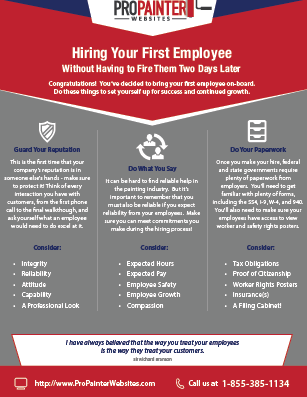Recognizing Seasonal Influences On Commercial Exterior Paint: Necessary Expertise For Success
Recognizing Seasonal Influences On Commercial Exterior Paint: Necessary Expertise For Success
Blog Article
Content Create By-Carlson Skafte
When you're preparing a commercial exterior painting project, seasonal factors can make or break your results. You'll want to consider just how temperature level and moisture effect paint application and drying times. Picking the appropriate period can ensure your paint sticks correctly and lasts longer. Yet which seasons are really the very best for this type of work? Let's discover the key elements that can influence your job's success.
The Impact of Temperature Level on Paint Application
When you're intending an industrial exterior painting project, the temperature level can significantly affect how well the paint adheres and dries out.
Ideally, ceiling painting company wish to repaint when temperatures vary between 50 ° F and 85 ° F. If it's as well cold, the paint may not heal effectively, bring about issues like peeling or fracturing.
On the other side, if it's too warm, the paint can dry out as well quickly, avoiding appropriate bond and leading to an unequal coating.
You need to likewise consider the moment of day; early morning or late afternoon provides cooler temperature levels, which can be much more beneficial.
Always inspect the manufacturer's referrals for the specific paint you're utilizing, as they often supply advice on the suitable temperature level array for optimum results.
Humidity and Its Impact on Drying Times
Temperature isn't the only ecological factor that affects your commercial external paint job; humidity plays a considerable duty as well. High moisture levels can reduce drying times considerably, influencing the general high quality of your paint work.
When the air is filled with moisture, the paint takes longer to treat, which can bring about concerns like bad adhesion and a higher risk of mildew growth. If you're painting on an especially damp day, be gotten ready for extensive wait times between layers.
It's critical to keep track of regional weather conditions and strategy as necessary. Ideally, go for moisture degrees between 40% and 70% for ideal drying.
Keeping these factors in mind ensures your task stays on track and supplies a lasting surface.
Best Seasons for Commercial Outside Painting Projects
What's the very best season for your commercial exterior paint tasks?
Spring and early autumn are commonly your best bets. Throughout these seasons, temperatures are mild, and humidity levels are often reduced, producing excellent problems for paint application and drying out.
Avoid https://smalljobpaintersnearme09986.prublogger.com/34165130/discover-the-possibility-of-eco-friendly-alternatives-in-business-exterior-painting-to-revitalize-your-company-and-profit-the-community-yet-what-real-effects-will-your-selections-have , which can create paint to dry also promptly, resulting in poor bond and coating. Similarly, winter months's cold temperatures can hinder appropriate drying out and curing, taking the chance of the long life of your paint work.
Go for days with temperatures between 50 ° F and 85 ° F for optimal results. Bear in mind to examine the local weather prediction for rain, as damp conditions can ruin your task.
Preparation around these variables guarantees your painting project runs efficiently and lasts much longer.
Verdict
In conclusion, preparing your industrial external painting jobs around seasonal considerations can make a substantial distinction in the result. By scheduling work throughout the optimal temperatures and moisture degrees, you'll make sure much better bond and drying out times. Bear in mind to watch on regional weather prediction and choose the right time of year-- spring and very early autumn are your best options. Taking these actions will help you attain a durable and expert surface that lasts.
